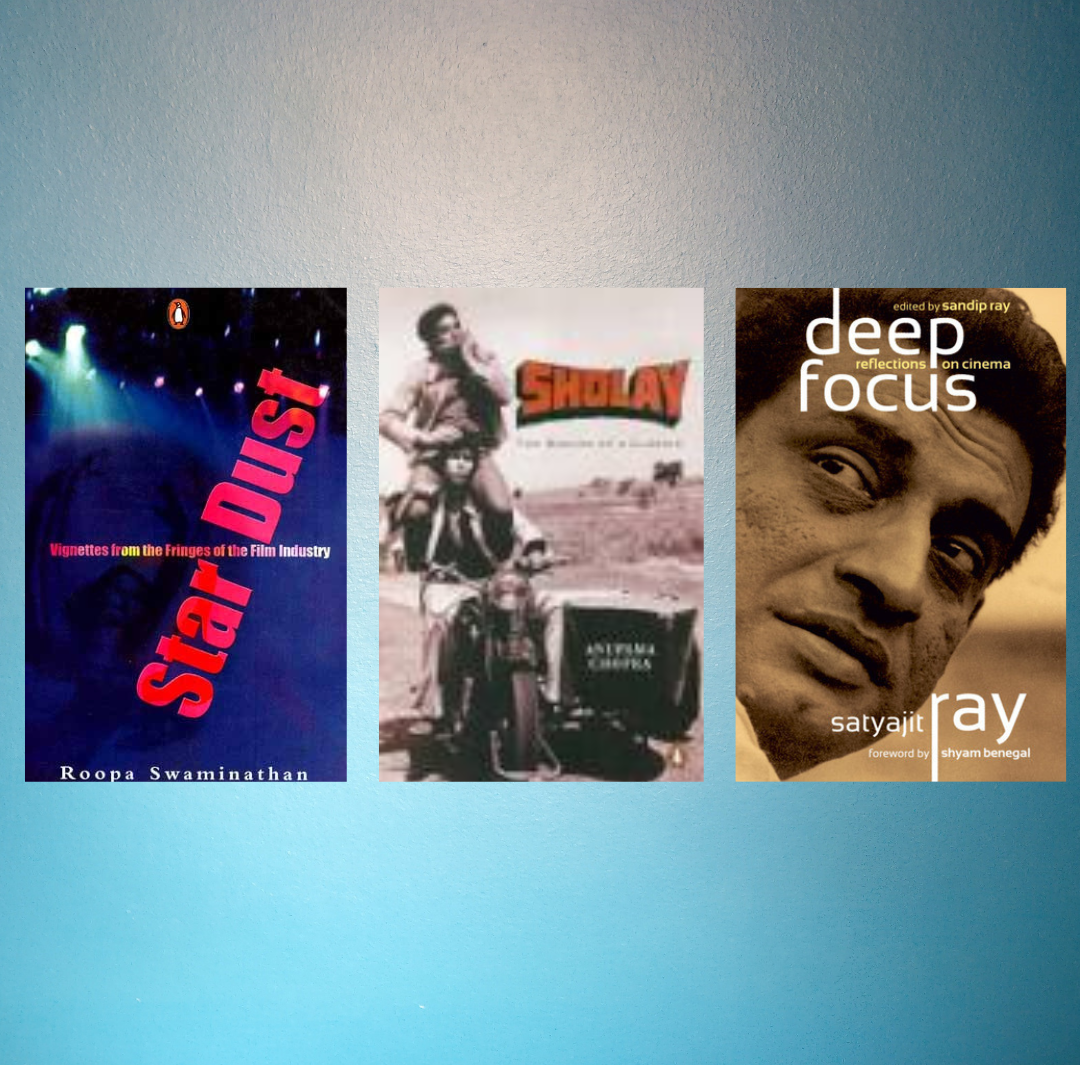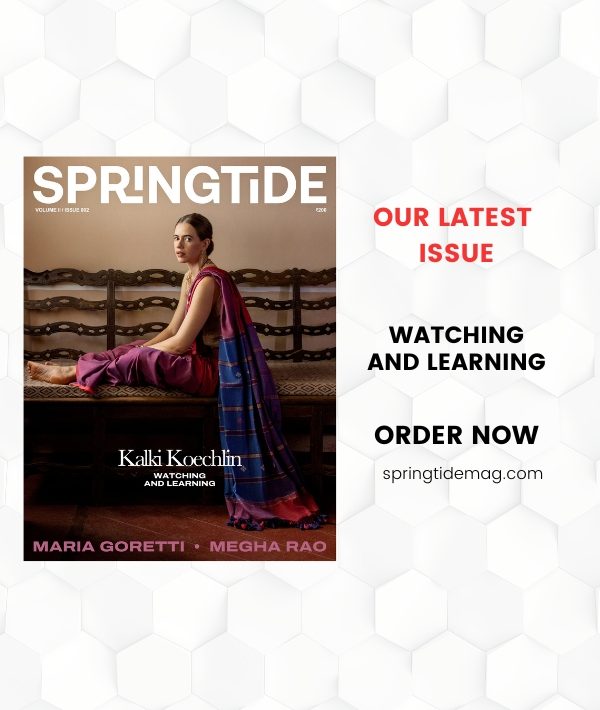In the realm of global cinema, few industries boast the diverse, dynamic, and culturally rich tapestry that Indian cinema weaves. From the glitz and glamour of Bollywood to the nuanced artistry of regional films, India’s cinematic landscape has captivated audiences for over a century. Behind the silver screen magic lies a complex amalgamation of history, society, and creativity that has shaped the evolution of Indian filmmaking. We’ve rounded up five books that can help you learn about the cultural influences, creative ideas, and ever-evolving narrative techniques that have defined and redefined Indian cinema.
Stardust: Vignettes from the Fringes of Film Industry by Roopa Swaminathan
Where most books are about filmmakers and stars on screen, this rare book gives us a glimpse into the lives of the so-called ‘extras’ and technicians we don’t see often. The book features the accounts of the lives of fans, extras, dancers, crew members and character artists who despite living in the shadows are an integral part of the Indian cinema. While countless narratives have been woven around the silver screen luminaries, Stardust Unveiled takes a different path, delving into the narratives of the “extras,” the tireless technicians, and the dedicated crew members who are the gears that keep the cinematic machinery in motion. Swaminathan’s book offers a much-needed tribute to these often-overlooked individuals, shedding light on the lives and stories of those who are the heartbeat of the Indian film industry.
A Pictorial History Of The Silent Cinema Era by B. D. Garg
This book chronicles a remarkable era in Indian cinema – the age of silent films. Out of the approximately 1,300 silent movies created between 1913 and 1931, merely a mere one per cent have managed to endure, and even fewer have retained their complete form. The narrative follows the journey of the pioneers of this era, who confronted numerous challenges and spearheaded groundbreaking innovations, resulting in a cinematic artistry that often rivalled the standards of Western filmmaking. Authored by B.D. Garga, widely regarded as India’s preeminent film historian, the book masterfully paints a captivating picture of this period. Enriched with photographs, posters, and other invaluable relics from the era, the book vividly revives the tale of cinema’s nascent steps in a nation that now stands as the global leader in film production.
Sholay: Making of a Classic by Anupama Chopra
Even if you aren’t an avid cinema-goer – you’re bound to know about the timeless classic film, Sholay. In her book, film journalist Anupama Chopra tells an exciting story about how a small idea turned into the biggest hit in Indian cinema. She begins by unravelling the challenging process of selecting actors, followed by the actual filming that spanned two years in a desolate and rocky terrain. The story then unfolds into the initial weeks after the movie’s release, when audiences initially stayed away, and the industry labelled it a failure. While the book doesn’t necessarily offer insights into Indian Cinema as a whole, it will give you an idea of how we make films – through anecdotes from behind the scenes and production that tell the readers how even the likes of Amitabh Bachan and Dharmendra were once young and ambitious actors.
Deep Focus: Reflections on Cinema by Satyajit Ray
Satyajit Ray’s deep mastery of the cinema has inspired some of the greatest filmmakers you know today, from Martin Scorsese to Akira Kurosawa. His films, from Pather Panchali in the mid-1950s to Agantuk in the 1990s, changed the way the world looked at Indian cinema. This book gathers a collection of his most intellectual writings on film. Echoing the economy and precision seen in his movies, Ray explores the art and techniques of cinema, offers a heartfelt tribute to silent cinema, delves into the challenges of translating literary works to the screen, honours fellow contemporaries like Godard and Uttam Kumar, and grants us insights into his journeys through film festivals – both as a judge and a participant. Ray’s passion for cinema is evident in Deep Focus, which provides invaluable insight into the mind of a genius.
History Through the Lens: Perspectives on South Indian Cinema by S Theodore Baskaran
Indian cinema isn’t limited to Bollywood – among regional industries, South Indian films have especially made strides globally with larger-than-life works like RRR and Bahubali putting Indian filmmakers on the map. In his book, Theodore Baskaran, a legendary film historian, skillfully intertwines the enchantment and substance of South Indian cinema, crafting a vibrant array of accessible essays. The topics explored encompass the beginnings of cinema in the South, the role of trade unions in the South Indian film industry, and the importance of documenting the history of Southern cinema. While placing a prominent spotlight on Tamil cinema, this compilation will engage not only historians and Indian film scholars but also those curious readers seeking a lively introduction to the realm of South Indian films.





